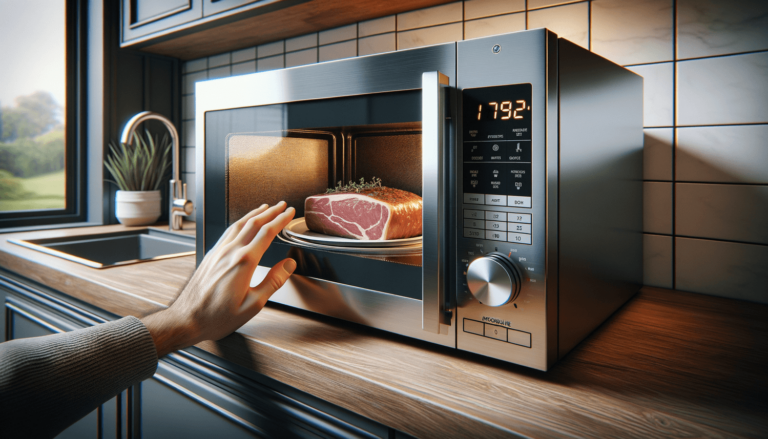

Using the defrost feature on your microwave allows you to thaw frozen foods more quickly and safely than leaving them out at room temperature.
Start by placing the frozen item in a microwave-safe dish. Find the defrost setting on your microwave, usually identified with the word ‘defrost’ or a symbol resembling a snowflake. Enter the weight of the food or select the type of food if your microwave requires this information. Start the defrost cycle, and remember to flip or stir the food halfway through for even thawing. At Setting King, we recommend checking the food periodically to prevent cooking instead of defrosting.
Quick Summary
Understanding how to use the defrost function on your microwave can make meal preparation faster and safer. Freezing food is a great way to preserve it, but when it comes time to cook, thawing in the fridge can take hours, even days for larger items. Microwave defrosting is a game changer, but doing it right is key. Here’s how you can master the process, following Setting King’s trusted advice.
First things first: not all containers are microwave-safe. Glass or ceramic containers are your best bet. Avoid metals and some plastics that can warp or leach chemicals into food when heated. If in doubt, look for a microwave-safe label on the container.
Microwaves often come with a range of settings and presets for different food types. When you select the defrost function, you might need to input the weight of the food. This helps the microwave adjust the defrosting time automatically to avoid partially cooking the food.
One common issue with microwave defrosting is uneven thawing, where parts of the food start cooking while others remain frozen. To prevent this, pause the microwave halfway through the defrost cycle to flip or stir the food. This is especially important for meat and poultry to avoid bacteria growth in partly thawed food. Smaller items may require less intervention than larger ones.
It’s crucial to know when to stop the defrost cycle. If you notice edges of the food starting to cook, pause the microwave and let residual heat continue the thawing process. Foods that are partially cooked and then refrozen can become unsafe to eat.
Once the defrost cycle finishes, check the food for any cold spots or ice crystals. If necessary, return it to the microwave for a brief additional period, checking frequently. Remember, the goal is to defrost, not cook.
Properly using the defrost setting on your microwave is a safe and efficient way to thaw frozen food. Remember, the objective is to thaw the food thoroughly without beginning the cooking process. Now that you’re armed with this knowledge from Setting King, feel more confident in handling frozen foods and preparing meals more efficiently.